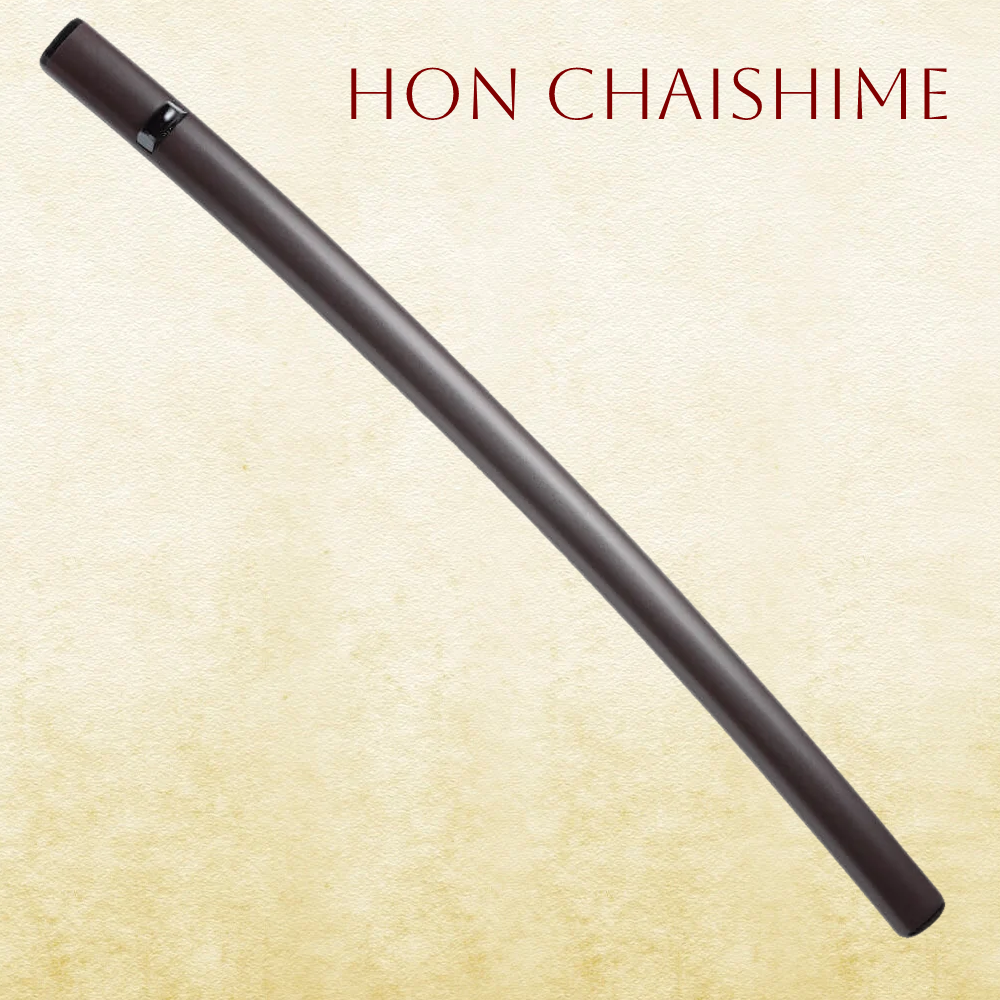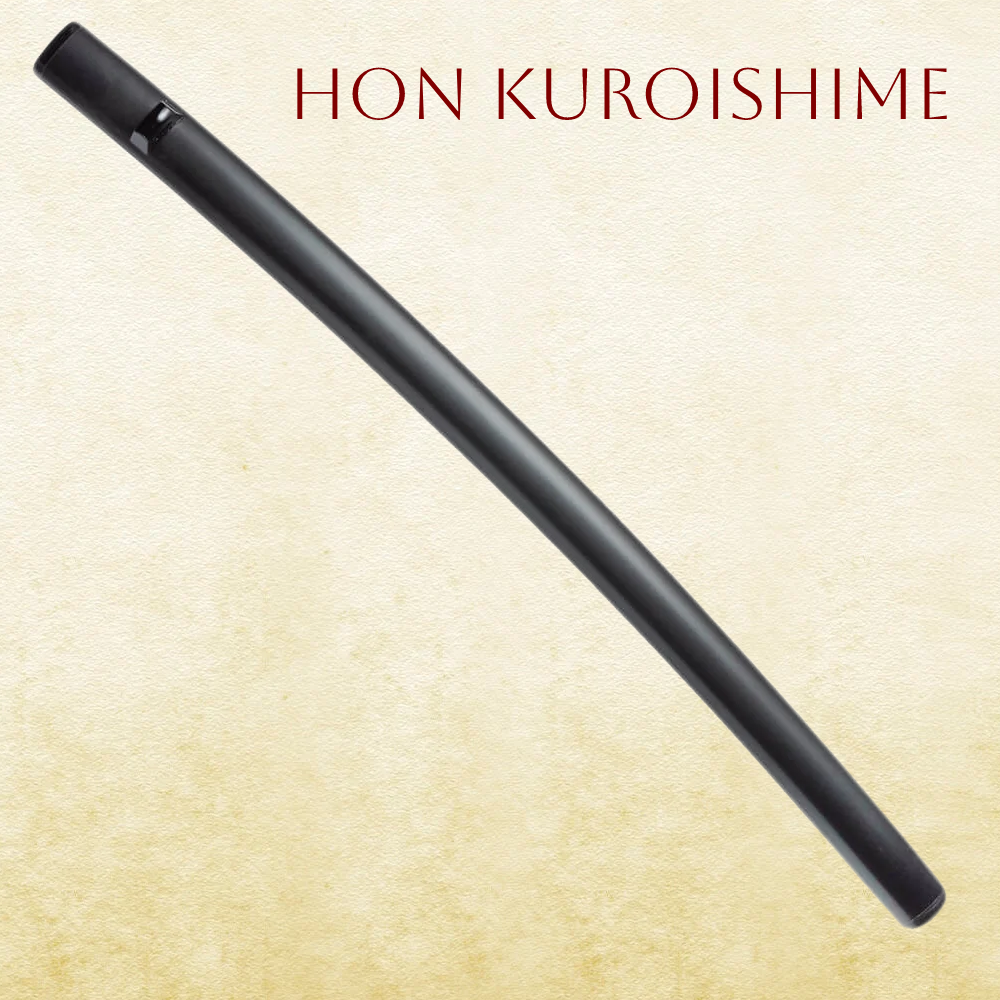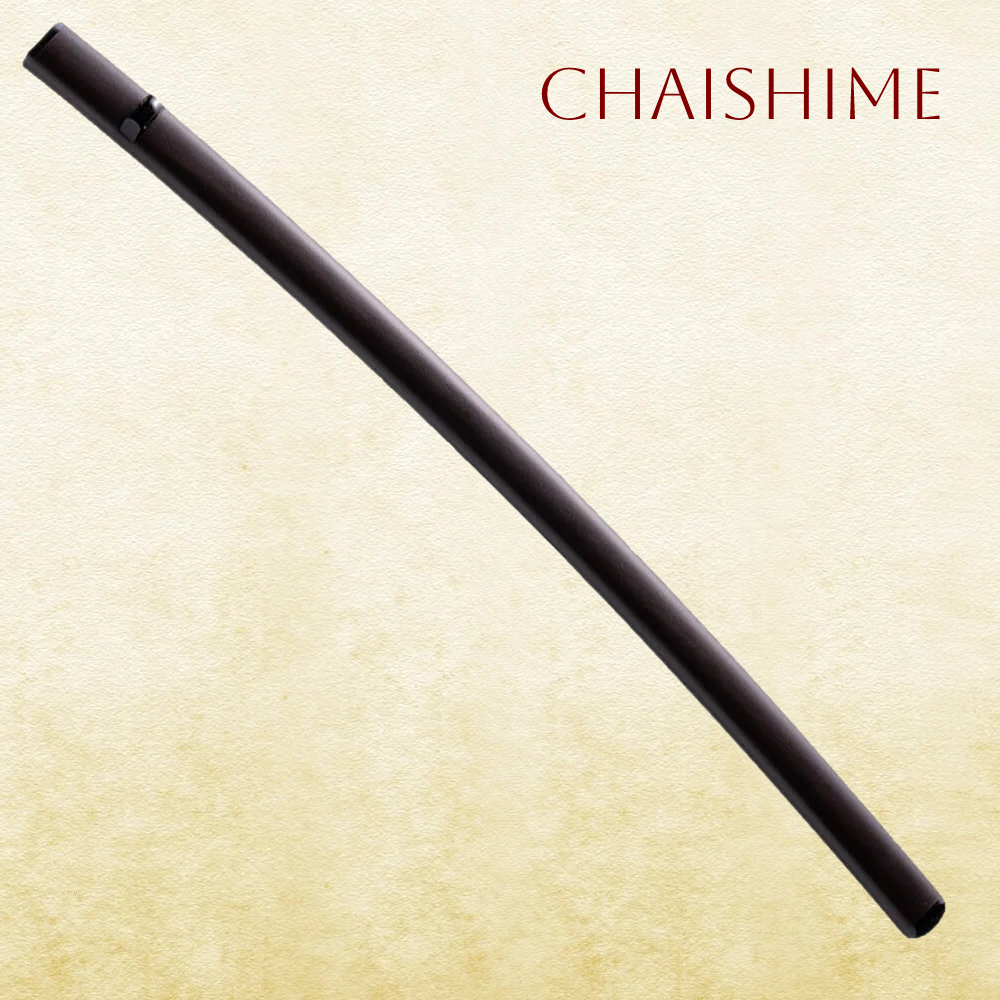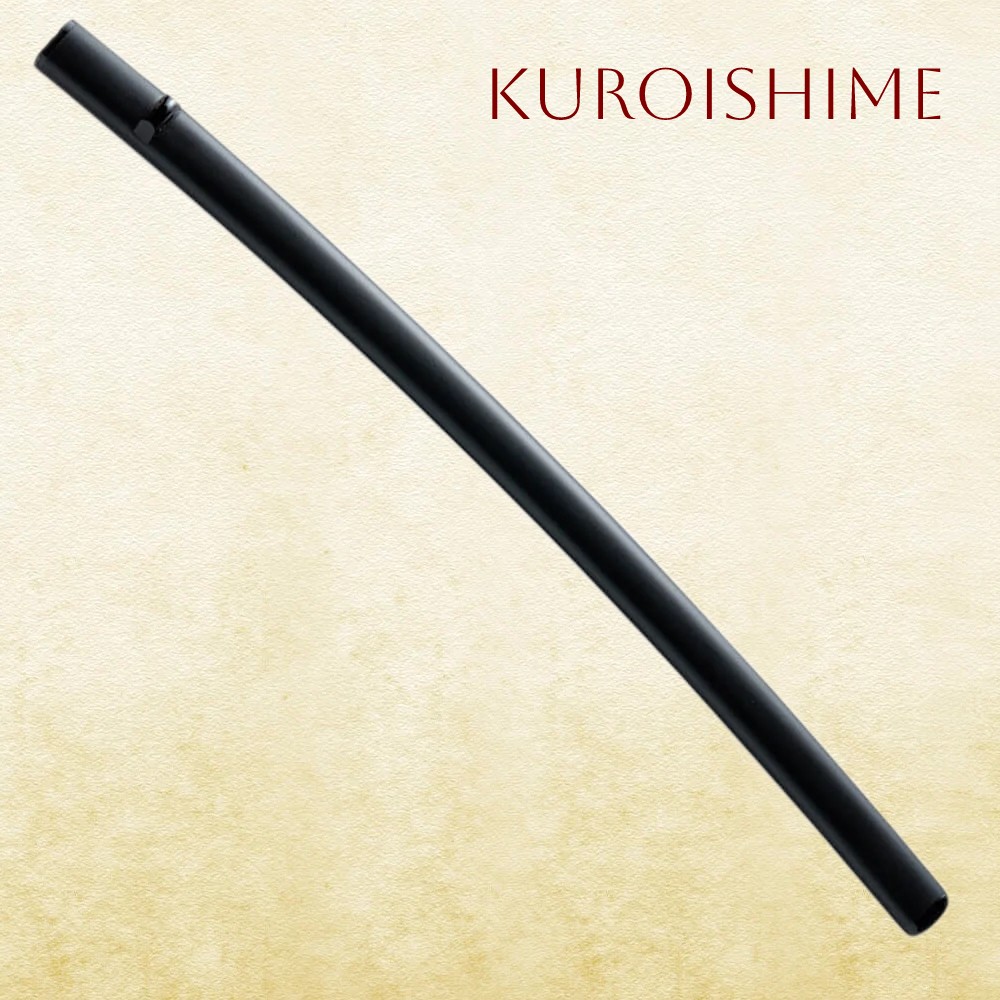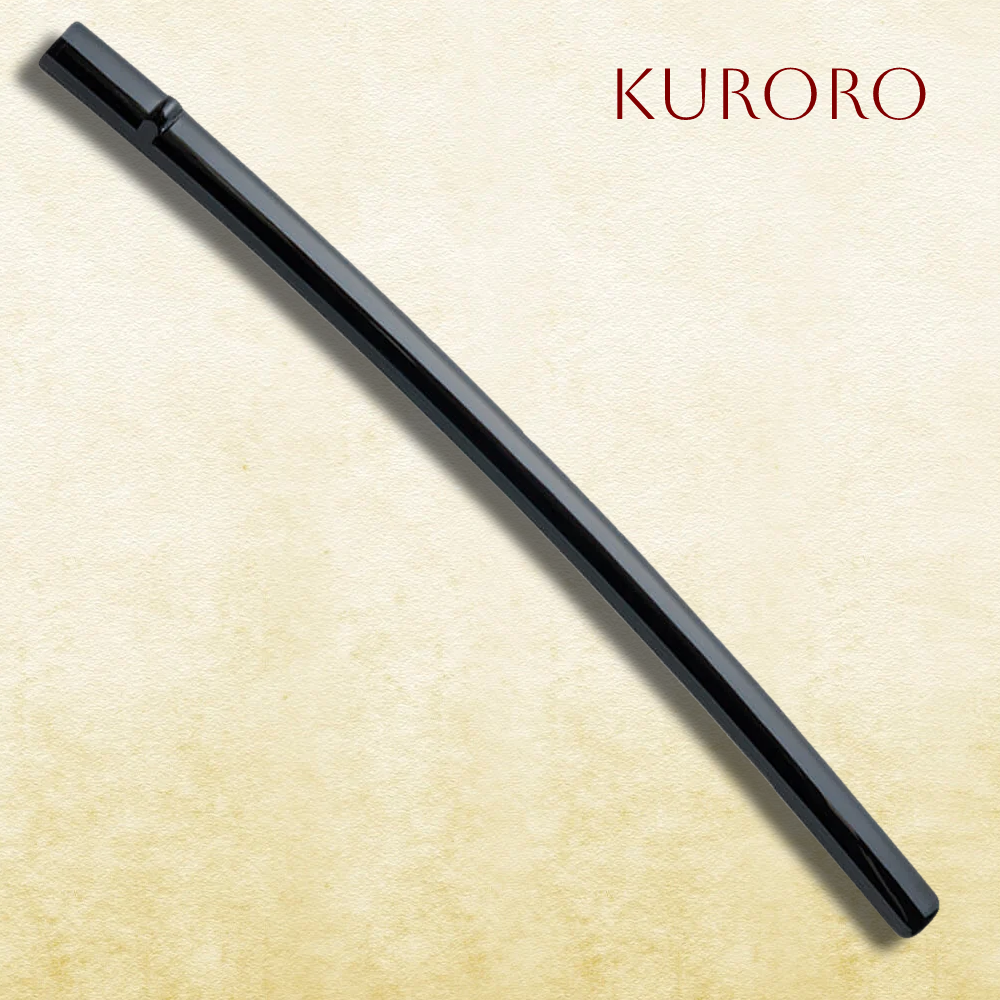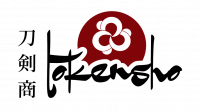Let's start configuring your Matsukaze

Here you can select the characteristics of your Matsukaze blade, ranging from basic dimensions to the aesthetics of the blade.
A blade is the heart of your Katana. It’s shape, length and other aspects should be chosen carefully. We are limiting the amount of choices you have for the blade to some aspects currently. Other dimensions are left out from the configuration as they are a consequence of the choices you make. But of course, if you want a different Sugata (other than our standard Shinogi-Zukuri) please let us know and we will try to accomodate for your wishes. So, let’s get started
Here you can select the characteristics of your Fittings: materials, patination, style etc.
The Tosogu are the metal parts on your Matsukaze (well, apart from the blade obviously): Habaki, Seppa, Fuchi & Kashira and Menuki
Get a grip
In this step you will make your choice on the dimensions, materials and styles relating to the Tsuka (handle) of your Matsukaze sword.
Here you can select the characteristics of your Katana’s sheath, the sageo-cord and the Fukuro bag.
The Saya, a beautifully crafted wooden scabbard, acts as both protection and showcase for the revered Japanese Katana. Each Saya is tailored to its sword, with careful attention paid to the lacquer finish and traditional adornments. Complementing the Saya, the Sageo serves as an elegant, woven cord that secures the scabbard to the wearer’s obi or belt. Rich in history and symbolism, the Sageo’s intricate design and color not only reflect the owner’s taste but also their rank and social status. Together, the Saya and Sageo embody the harmonious balance between functionality and aesthetics, capturing the essence of the Samurai spirit.
Please let us know how we should contact you regarding your configuration and the quote
Finishing up
You have successfully configured your Matsukaze. Below you will find some information on what’s in the package that you will receive as well as information on the timings and process of having your Matsukaze made along with our payment terms.
- The Blade
- Tosogu
- Tsuka and Tsukamaki
- Saya, Sageo & Fukuro
- Contact data
- Almost done
Nagasa

The Nagasa is the length of the blade of a Japanese sword, such as a katana, measured from the tip to the base of the blade near the habaki (blade collar). It is an important measurement in swordsmithing, as it determines the overall size and balance of the sword. The Nagasa of a katana typically ranges from around 60cm to 76cm, with the average length being around 71cm. The length of the Nagasa is influenced by a number of factors, including the intended use of the sword, the preferences of the owner, and the traditions of the swordsmithing school. A longer Nagasa can make a sword more effective for cutting or thrusting, as it provides a greater reach and momentum. However, a longer sword may also be heavier and more difficult to maneuver, especially in close combat. A shorter Nagasa can make a sword lighter and more agile, but may sacrifice some cutting power.
Keep in mind that there really is no standard size as swords should be tailored to the individual’s body and personal likes. Generally, the sword length is measured in the following way: Stand naturally erect and hold the sword’s handle just below the tsuba, allow your arm to hang comfortably along the side of your leg. Allowing the sword to rest point down, the tip of a correct length sword should barely touch the ground a few inches in front of the foot.
Traditionally, we are measuring the length of the blade in “Shaku”. To convert cm to Shaku, simply divide the cm by 30,303.
If you are unsure about the appropriate length of your blade, please choose “advise me” from the below options and we will contact you to discuss the optimal length of your Matsukaze.
Length (Nagasa)
Kissaki
The Kissaki, or tip, of a Japanese sword is an important feature that contributes to the sword’s overall balance and cutting ability. Three common types of Kissaki found on katanas are the Chu-Kissaki, the Ko-Kissaki, and the O-Kissaki.
The shape and length of the Kissaki can vary depending on the preferences of the swordsmith and the intended use of the sword. Each type of Kissaki offers its own unique strengths and characteristics, and sword enthusiasts and collectors often have their own personal preferences.
If you are unsure about the Kissaki for your blade, please choose “advise me” from the below options and we will contact you to discuss.

Kissaki (length of the tip)
Hi
The primary purpose of the hi is to make the blade lighter and more agile without compromising its strength. By removing material from the sides of the blade, the hi reduces the weight of the sword, making it easier to handle and swing. The hi also changes the distribution of the sword’s mass, making it feel more balanced and responsive. In addition to its functional purpose, the hi also has aesthetic value. The grooves create a visual contrast between the blade’s polished surface and the rougher texture of the grooves, enhancing the beauty of the sword. The shape and number of grooves can vary, depending on the swordsmith’s style and the preferences of the owner. The hi can also produce a sound when the sword is swung, which is sometimes referred to as the “tachikaze” or “sword wind”.
Kanemasa’s school is traditionally making swords without Hi. The smith is fine with adding a groove though. Should you want a more intricate Hi, please choose “other” from below and give some details in the textbox.
If you are not sure if you want a Hi or not, or what kind of Hi you might want, please choose “advise me” from the below menu. We will then reach out to you to discuss.

Hi
You have chosen another type of Hi. Please provide details in the textbox below and, if it helps, upload some pictures at the end of this section.
Other Hi type
Niku
Niku refers to the thickness and shape of the blade’s cross-section, specifically the amount of “meat” or “flesh” that the blade has.
In general, a blade with a lot of Niku will have a thicker cross-section, which provides more durability and resistance to bending or breaking. A blade with less Niku will have a thinner cross-section, which can make it more agile and allow for quicker cuts.
The amount of Niku is determined by the swordsmith during the forging process, based on the intended use of the blade and the preferences of the owner. A sword designed for cutting heavy targets like armor or thick bamboo would typically have more Niku, while a sword designed for swift, precise cutting would have less Niku.
Unless you are specifically after a nimble and light high performance cutter for competition or trick cutting or, opposite to that, a heavy duty cutter to hack through old bamboo, choosing regular Niku is most likely the best choice for you. Also bear in mind that more Niku will result in a signficantly heavier blade while little niku will have a negative effect on the ability of the blade to withstand abuse as the sult of targets too hard or bad technique.
As above, if you are unsure about how much “meat” you would want on your blade, don’t hesitate to reach out to us using the “advise me” choice.

Niku
Blade weight
The weight of a katana sword is influenced by several factors, including the length and thickness of the blade, the materials used to construct the sword, and the overall design. A heavier sword can provide greater cutting power, but it can also make the sword more difficult to wield and control.
The consequences of a heavy sword can vary depending on the skill level of the wielder. A skilled swordsman may be able to handle a heavier sword without issue, but a novice could struggle to control the sword’s movements. Additionally, a heavier sword can cause greater fatigue during prolonged use, which can impact the effectiveness of the wielder.
In terms of katana balance, it’s important to note that the weight of the sword must be balanced in a way that allows for precise and controlled movements. The point of balance, also known as the center of gravity, should be located close to the handguard or tsuba. This allows the wielder to easily manipulate the sword while maintaining control and precision.
As with Niku, going for the “regular” option is a good choice. And while our configurator will allow you to configure it that way, there is no such thing as a light blade with a lot of Niku 🙂
And again: If you are unsure, use the “advise me” option.
Weight
Hamon

The Hamon is formed when the blade is coated with a special clay mixture that is thicker on the blade’s back and thinner on the edge. The blade is then heated and quenched in water, causing the clay to harden and cool the thick parts of the blade at a slower rate than the thin parts. This creates a hard, sharp edge and a softer, more flexible spine, which gives the blade its distinctive curve and strength.
The resulting Hamon is a visible line that separates the hard edge from the softer spine of the blade. It can take on many different patterns and shapes, depending on the blade’s shape, the thickness of the clay coating, and the way the blade is heated and quenched. Hamon patterns are often used to identify the smith who forged the blade and can be appreciated for their artistic beauty as well as their functional purpose.
We are limiting the choice of Hamon to those that are traditionally done by Kanemasa’s school, which tend to be on the utilitarian side. Other, more intricate or flamboyant, Hamon are possible but will need to be discussed with the smith. Please choose the “other” option below and give us some details on the Hamon you might want. You can also upload a picture using the upload feature at the end of this section.

Hamon
You would like to have a different Hamon. Please provide details in the textbox below and, if it helps, upload some pictures at the end of this section.
Other Hamon (please provide details)
Uploads

Depending on the choices you have made above, you may want to provide some additional information like pictures, diagrams, sketches etc. Please use the below upload feature to that end. You can select multiple documents for the upload. The maximum size for the total upload is 64 MByte.
Please upload any files relevant to this section (blade)
Max. size: 64.0 MB
Habaki & Seppa
The seppa and habaki are essential components of a traditional Japanese sword. The seppa is a washer placed on either side of the tsuba, which helps to secure the blade in place within the hilt. The habaki, on the other hand, is a metal collar located at the base of the blade that provides a snug fit within the saya or scabbard. Together they form a critical component in the overall “system” of a Katana in use as they are key in transferring the loads from the blade into the Tsuka. A loose and ill fitting Habaki is a serious hazard!
Therefore we opted against “off-the-shelf” Habaki and instead are modelling them to an optimal fit in a 3D modelling software, check the fit using PLA prototypes and finally have those cast in the chosen material using a “lost wax” process. Afterwards they are patinated and finished by Manuel.

Material
You would like to have your Seppa and Habaki made from a different material. Please provide details in the textbox below and, if you think it helps, upload some pictures at the end of this section.
As you have selected “other”, please let us what material and patinating you would want.
Habaki may be plain or “engraved” with a Kamon of your choice. We are putting engraved in quotes here as actually the Kamon will be modelled into the Habaki during the 3d design process. Our Habaki come generally with a brushed surface. If you want a different surface, please let us know and select “other ornaments, surface treatment” from below.
Habaki ornaments and surface
You are after a Habaki with a different surface finish or ornaments. Please provide details in the textbox below and, if you think it helps, upload some pictures at the end of this section.
other ornaments and/or surface treatment
Fuchi & Kashira
The fuchi is the collar located at the base of the handle, while the kashira is the ornamental pommel at the end of the handle. These fittings not only serve a decorative purpose, but also help to provide a comfortable and secure grip on the sword. They are typically made from high-quality metals such as copper, silver, or gold, and often feature intricate designs or motifs that reflect the sword’s owner or its intended use. Fuchi Kashira can also serve as a means of identification or signature for the swordsmith who created the sword, as they would often incorporate their own unique designs or symbols into these fittings.
The design of the fuchi kashira can vary widely, with some featuring simple and understated patterns, while others are more elaborate and ornate. Many fuchi kashira sets are designed to be complementary, featuring a consistent theme or motif throughout the set. This creates a cohesive and visually appealing aesthetic that enhances the overall appearance of the sword.
In addition to their aesthetic and functional purposes, fuchi kashira are also considered to be a reflection of the sword owner’s status and social standing. During the Edo period in Japan, fuchi kashira sets became increasingly elaborate and ornate, and owning a finely crafted set was seen as a symbol of wealth and prestige.
Today, fuchi kashira remain an important component of traditional Japanese swords, and many contemporary swordsmiths continue to incorporate these fittings into their designs. Whether used for functional or decorative purposes, fuchi kashira are an integral part of the Japanese sword’s design and history.
Our designs are definitely on the simpler side. And that is for a number of good reasons. First of all, obviously cost play a role here: Carving an intricate “Ryuu” into the top of a Kashira and adding “Zogan” inlays for a singleton would drive them through the roof. We want to be able to provide traditionally made Fuchi Kashira (not cast ones) at reasonable cost. And second, we like it that way. And we hope that you do too. Our Fuchi and Kashira are sized to fit the hand of an average modern western practitioner. Should you want something bigger or smaller, please let us know by choosing “please advise” below. Also, you can provide us with a scan of your hand outline (and outline only please, we don’t want your fingerprints on file with GDPR and all that) by uploading it at the end of this section.
Fuchi Size

What material would you like for your Fuchi Kashira
You have opted for a different material for the Fuchi/Kashira. Please provide details in the textbox below and, if it helps, upload some pictures at the end of this section.
Other material for Fuchi/Kashira
Our Fuchi Kashira are made either plain, ornamented with stamped Kamon or carved by Manuel. Kamon, or Japanese family crests, hold a special place in Japanese culture as they symbolize the history, heritage, and identity of Japanese families. Originating in the Heian period (794-1185), Kamon were initially exclusive to noble families and samurai warriors as a means of showcasing their social status and lineage.Each Kamon is characterized by its unique geometric patterns, plants, animals, or natural phenomena, representing the values and aspirations of the family it belongs to. Often, the designs are abstract and highly stylized, with a focus on symmetry and simplicity. Alternatively you can have another motif stamped or even hand carved.
On its baseline, Matsukaze’s F/K designs are limited to plain, simple carvings or stamps like in the examples below. More ornate decoration like complex carvings or other ornaments come at extra cost. Should you opt for something like this, we will contact you and guide you through a design process, including sketches and a photo-documentation of the progress.
If you want to have something individually carved into your Fuchi/Kashira, please choose “other” from below, give some details in the textbox and consider providing sketches etc. using the upload feature at the end of the section. Of course, such individual carving will also be individually costed and priced.

Fuchi Kashira ornaments
You would like to have your Fuchi/Kashira ornamented in a different way. Please provide details in the textbox below and, if it helps, upload some pictures at the end of this section.
Other ornaments
Tsuba
Tsuba is the handguard on a katana sword, which is designed to protect the wielder’s hand from being injured during combat. It is usually made of metal, but it can also be crafted from other materials such as wood, ivory, or stone. The tsuba can be decorated with intricate patterns, symbolic motifs, or scenes from nature, folklore, or history.
The tsuba’s design can reveal information about the sword’s origin, era, and owner, as well as the purpose of the sword. For example, tsubas with floral or bird motifs were often used by samurai during peaceful times, while tsubas with aggressive or defensive designs were used during wartime.
The size and weight of the tsuba can also affect the sword’s balance and handling. Some tsubas are larger and heavier to provide more protection for the hand, while others are smaller and lighter to improve the sword’s agility and speed. The size and thickness of a Tsuba can also be used to control the point of balance of a Katana.
In addition to its functional and decorative purposes, the tsuba also has cultural and spiritual significance in Japanese society. It is considered a form of art and craftsmanship, and it often reflects the values and beliefs of the samurai who used it.

Tsuba shape
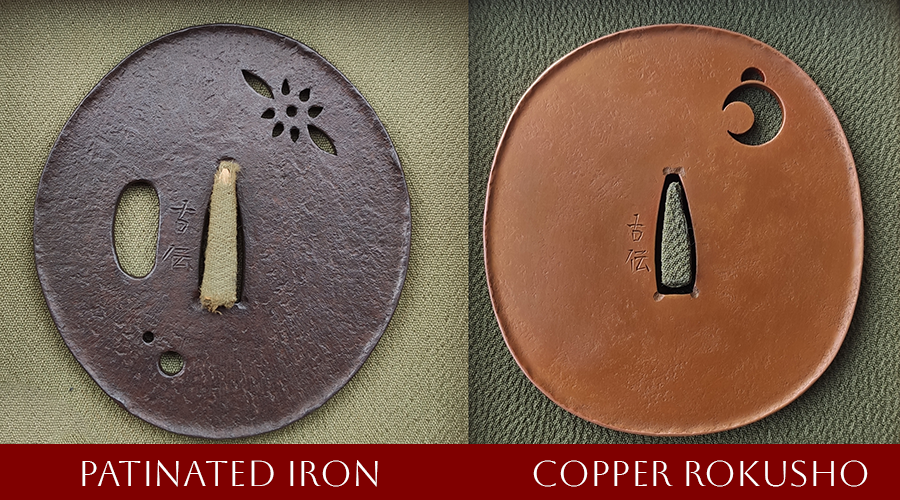
Tsuba material
Ok, you want a different material for your Tsuba. Please provide details in the textbox below and, if it helps, upload some pictures at the end of this section.
Other Tsuba material
Tsuba decoration often incorporates a range of techniques, including carving, inlay, engraving, and painting. Carving is used to create relief designs in the metal, often using techniques such as sukashi (openwork), horikomi (engraving), and iroe (coloring). Inlay involves embedding materials such as gold, silver, or copper into the metal to create intricate designs. Engraving is used to create fine lines and details, while painting involves applying color to the surface of the Tsuba. On its baseline, Matsukaze’s Tsuba design is limited to simple carvings or Sukashi like in the examples below. More ornate decoration like complex carvings, extensive Sukashi, Fukurin or others come at extra cost. Should you opt for something like this, we will contact you and guide you through a design process, including sketches and a photo-documentation of the progress.
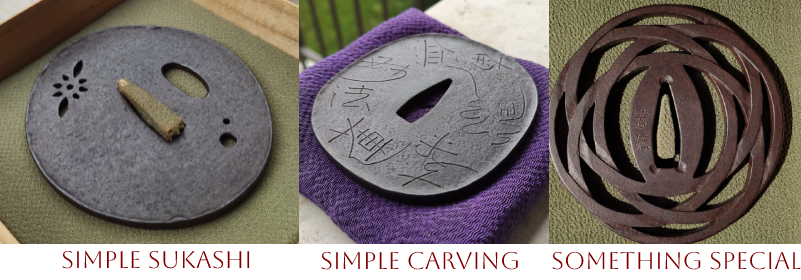
Tsuba Ornaments
You have chosen a special design Tsuba. Please provide details in the textbox below and, if it helps, upload some pictures at the end of this section.
Other tsuba ornaments
Menuki
Menuki (目貫) are small decorative ornaments found on traditional Japanese swords, typically katana, wakizashi, and tanto. They are placed on either side of the handle underneath the wrapping, and are designed to provide better grip and balance to the sword.
Menuki are typically made of metals such as copper, brass, or silver, and can be highly detailed and ornate, depicting animals, plants, mythological creatures, or historical figures. They are often made in pairs, and are symmetrical in design, with each Menuki matching the other.
The Menuki serves not only as a decorative element, but also as a functional component of the sword, adding to the overall balance and handling of the weapon. In addition, they also serve as a way to identify the maker or school of the sword, as they often bear the signature or emblem of the craftsman who made the sword or the school to which they belonged.
Menuki are highly valued by collectors and enthusiasts of Japanese swords, and can be found in a variety of styles and designs. They are considered an important aspect of the craftsmanship and artistry of the Japanese sword, and are an important part of its cultural heritage.

Menuki
You have opted for standard Iaito Menuki. Please click here to open a page with our current choice of standard, of course “made in Japan” Iaito Menuki. Please make your choice and note the article number. Please put that number in below.
Standard Iaito Menuki (article number)
You have opted for Sterling Silver Iaito Menuki. Please click here to open a page with our current choice of standard, of course “made in Japan” Iaito Menuki. Please make your choice and note the article number. Please put that number in below.
Sterling Silver Iaito Menuki (article number)
You have opted for Brass Coin Menuki. We currently have the two motifs shown above ready to go. If you want a different Kamon, please let us know below and we will likely be able to fit it into the baseline pricing. This will depend on both complexity of the Kamon and also a bit on the likeliness of your choice having the potential to be requested by other clients. So, just let us know.
Here is a link to a great page on Kamon at doyouknowjapan.com
Brass Coin Menuki Motif
Please give us some information on the Kamon (name, maybe a URL) you would like us to incorporate in a set of coin Menuki.
You have opted for copper Rokusho patinated Coin Menuki. We currently have the two motifs shown above ready to go. If you want a different Kamon, please let us know below.
Copper Rokusho Coin Menuki Motif
Please give us some information on the Kamon (name, maybe a URL) you would like us to incorporate in a set of coin Menuki.
You have opted for Sterling Silver Coin Menuki. We currently have the two motifs shown above ready to go. If you want a different Kamon, please let us know below.
Silver Coin Menuki Motif
Please give us some information on the Kamon (name, maybe a URL) you would like us to incorporate in a set of coin Menuki.
You have opted for antique Menuki to give your Matsukaze even a bit more of that 日本刀 look. You can either provide us with antiques you own or direct us (URL) towards a specific set of Menuki you may have in mind. You can also upload a couple of pictures of your Menuki below. We will have a look at it and get back to you. Please do understand that we will not accept any Chinese made Menuki.
More information on the antique Menuki you would want.
Uploads

Depending on the choices you have made above, you may want to provide some additional information like pictures, diagrams, sketches etc. Please use the below upload feature to that end. You can select multiple documents for the upload. The maximum size for the total upload is 64 MByte.
Please upload any files relevant to this section (Tosogu)
Max. size: 64.0 MB
Tsuka Shape
We are currently offering 3 different Tsuka-shapes:
Haichi-gata: The Haichi-gata Tsuka shape is wider at the bottom and narrower at the top, which provides better balance and stability to the sword. The wider base also allows for a more secure grip for the swordsman’s hand. This Tsuka shape was developed in the Edo period (1603-1868) and was used on swords made for the samurai class. The Haichi-gata Tsuka shape was designed to be functional and practical, providing the swordsman with the necessary grip and balance for efficient use of the sword.
Rikko-gata: The Rikko-gata Tsuka shape is wider at the top and narrower at the bottom, which allows for a more comfortable grip and better control of the sword. The wider top of the Tsuka allows for a more secure grip, while the narrower bottom provides balance and stability. This Tsuka shape originated in the Muromachi period (1336-1573) and was used on swords made for both the samurai and the nobility. The Rikko-gata Tsuka shape was designed to be versatile and adaptable, providing a comfortable grip and balance for the swordsman in various sword fighting styles.
Imogata: The Imogata Tsuka shape is similar to the Hira-gata Tsuka, but with rounded edges that create a more ergonomic grip. The rounded edges allow for a comfortable grip and better control of the sword, especially during prolonged use. This Tsuka shape originated in the Heian period (794-1185) and was used on swords made for both the samurai and the nobility. The Imogata Tsuka shape was designed to be comfortable and practical, providing the swordsman with a secure grip and balance during sword fighting.
Overall, the choice of Tsuka shape depends on the intended use of the sword and the preferences of the sword maker. Each Tsuka shape has its own unique characteristics and history, and all are designed to provide the swordsman with the necessary grip and balance for efficient and effective use of the sword.

Tsuka-Gata
You would like another shape for your Tsuka? Please provide details in the textbox below and, if it helps, upload some pictures at the end of this section.
Tsuka Shape other
Tsuka length
The length of the Tsuka, or handle, is an important aspect of Katana sword-making that has evolved over centuries of craftsmanship and innovation.
Historically, Tsuka lengths varied based on the intended use of the sword. For example, longer Tsuka were favored by mounted samurai for their increased reach, while shorter Tsuka were favored by foot soldiers for their maneuverability. The length of the Tsuka could also vary depending on the preference of the sword maker or the intended use of the sword, such as for cutting versus thrusting.
in modern times, the most commonly used Tsuka length sfor a standard Katana sword are around 8-9 Sun (one Sun being equal to 3.03 cm). This length is considered to provide a good balance between reach and maneuverability, and is favored by many swordsmanship schools and practitioners. However, some swords may have longer or shorter Tsuka lengths based on their intended use or the preferences of the sword maker or owner.
If you choose “longer”, we will get in touch with you to discuss.
Tsuka length
Same-Gawa
Same-Gawa is a type of ray skin that is commonly used in the construction of Japanese swords, including the Katana. Same-Gawa is known for its durability, strength, and unique texture, which provides a non-slip grip for the swordsman’s hand. The ray skin is typically cut into small rectangles and then applied to the handle of the sword, where it is wrapped with silk, cotton or leather cord.
High-quality Same-Gawa is typically sourced from mature rays with large, uniform scales, and is carefully processed to preserve its texture, durability, and appearance. The best Same-Gawa is known for its fine texture, even coloration, and lack of blemishes or imperfections.
Emperor’s Node Same-Gawa is considered to be a premium material for Japanese sword-making, and is often used to decorate the handles of high-quality swords, including those used by the samurai and other nobility. The rarity and beauty of Emperor’s Node Same-Gawa make it a prized material for collectors and enthusiasts of Japanese swords, and it is often associated with the highest levels of craftsmanship and artistry in traditional sword-making. Due to its rarity, Emperor’s Node Same-Gawa is also more expensive than other types of Same-Gawa, and is often considered a luxury material.
We use a solid medium grade Same-Gawa on the baseline of Matsukaze and we prefer to do panels instead of wraps. Yes, a full wrap helps to keep the Tsuka in one piece under hard use but no, unless you are doing heavy Tameshigiri very often, there is really no “structural imperative” to have a full wrap. Therefore, we use panels on the baseline Matsukaze. Also because, Same-Gawa is an animal product and rays have to die for it, so …*
Same-Gawa can be lacquered. Lacquering is a traditional Japanese finishing technique that involves applying layers of lacquer to the surface of the Same-Gawa. This finish enhances the texture and durability of the Same-Gawa, while also protecting it from moisture, dirt, and wear.
To give your Matsukaze a special look, you can choose to have the Samegawa artificially aged. For this we use a super-secret recipe (ok, it’s coffee or tea) to make the Same-Gawa look old.

Same Quality

Same Color
Tsuka-Ito
Tsuka-ito is the wrapping material used to cover the Same-Gawa handle of a Katana sword. The Tsuka-ito is traditionally made of silk or cotton, and is wrapped in a specific pattern that not only enhances the grip of the handle but also creates a distinctive visual effect.
The material used for Tsuka-ito can also vary. While silk and cotton are the most commonly found materials, we have chosen to offer Matuskaze only with either silk or Nubuk leather as materials for the Tsuka-Ito. Matsukaze is meant to be a practitioner’s blade and silk and leather are the most robust and resilient materials as Ito for your Tsuka
Tsuka-Ito in both materials comes in a large number of colors. Instead of providing pictures of a particular Ito, you can choose a hue here and we will contact you with options either in stock or source-able.

Ito material
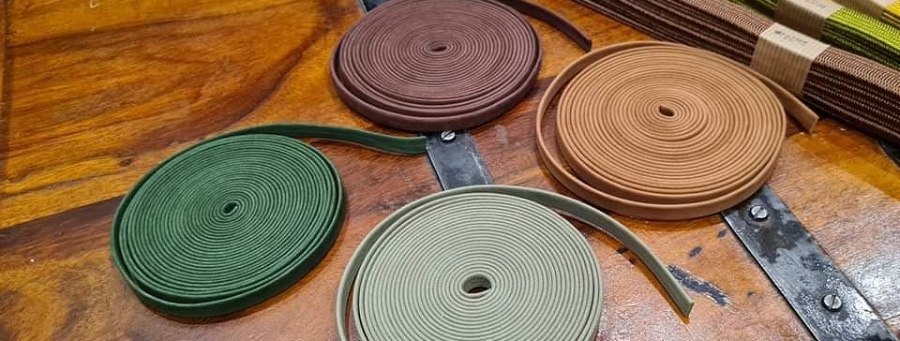
Ito color
You want a different color Ito. Please provide details in the textbox below and, if it helps, upload some pictures at the end of this section.
Other Ito color
Tsuka-Maki
Tsuka-Maki ,the wrapping pattern used for Tsuka-ito ,can vary depending on the school of swordsmanship or personal preference of the sword maker. Most common are the Hineri-maki, which is a diagonal wrapping pattern, and the Katate-maki, which is a single strand wrapping pattern. There are many more intricate and ornate patterns for Tsuka-Maki, but, Matsukaze being a practitioner’s sword, we only offer Hineri-maki and Katate-Maki as options. If you want something more fancy, like “Kodai Murasaki Jabara-Maki” or “Kawahosomaki Buyotsuka”, select “other” and we will discuss with you.

Tsuka-Maki style
Fancy something fancy ? Please provide details in the textbox below and, if it helps, upload some pictures at the end of this section.
Other Tsuka-Maki style
Mekugi
How many Mekugi do you want? There are good reasons for having one …. or two. A well fitted Tsuka will not require two Mekugi to hold the Nakago in the Tsuka as it mostly held by friction and yes, there are Nihonto with two Mekugi. If you want some extra safety, go with two. Nothing wrong with that. We are only using high quality Mekugi from Japan. Some people have gone with Mekugi made from Delrin, a plastic with ideal properties for the application, but honestly, it does look kind of crappy. Whatever option you go with, please take the time to check your sword every time before cutting or performing Iai with it. If in doubt, replace the Mekugi. We always put a spare into the box.
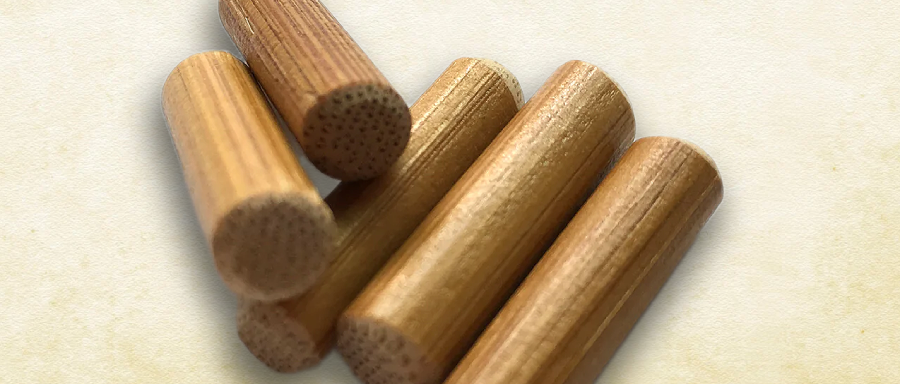
Number of Mekugi
Uoloads

Depending on the choices you have made above, you may want to provide some additional information like pictures, diagrams, sketches etc. Please use the below upload feature to that end. You can select multiple documents for the upload. The maximum size for the total upload is 64 MByte.
Please upload any files relevant to this section (Tsuka and Tsukamaki)
Max. size: 64.0 MB
Saya
Our Saya are made from Japanese Honoki (Magnolia). In order to keep cost in check, for baseline Matsukaze, we are using modern Poly-Urethane based lacquer and are only offering a limited number of finishes. Kurigata, Koiguchi and Kojiri are made from Ox horn. Other colors (glossy or ishime) are most likely possible within the baseline cost, but please reach out to us to check. More elaborate finishes (e.g. Tsui-Shu, Inro, Han Same etc.) are possible as well as ornaments like metal Kojiri, Kurigata and Koiguchi. Please choose “other” from below and give us some details on what you might be after.
Saya finish & color
You would like to have a custom Saya. Please provide details in the text box below and, if it helps, upload some pictures at the end of this section.
Other saya finish & color
Sageo
In the baseline version, we will choose an artificial silk / Rayon Kakucho (180 cm) Sageo to match your Tsuka-Ito as closely as possible. Should you want a longer Sageo, a specific color, pattern, or something more fancy, please let us know by choosing “Something else” from the below menu. We will then discuss options with you.

Sageo
You would like to have a custom Sageo. Please provide details in the text box below and, if it helps, upload some pictures at the end of this section.
Other Sageo
Fukuro (Katana bag)
We source our standard Fukuro from a small shop in Japan. The owner makes them from old Obi and Kimono. As above, if you would like something more fancy or specific, please choose the option “other” from below and give us some details on what you are after.
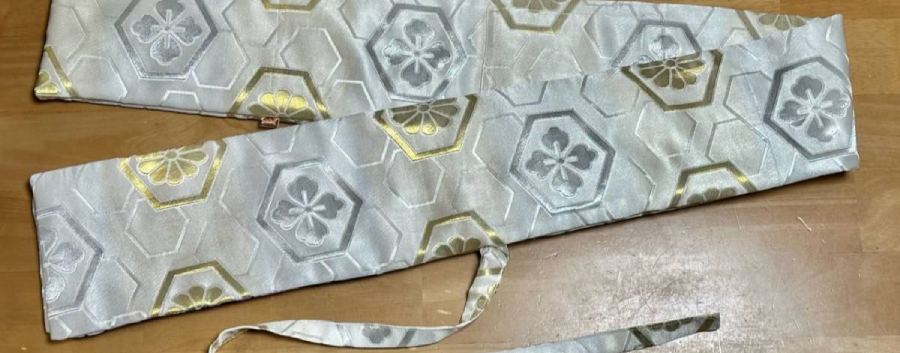
Fukuro
You would like a special Fukuro. Please provide details in the text box below and, if it helps, upload some pictures at the end of this section.
Other Fukuro
Uploads (Saya, Sageo & Fukuro)

Depending on the choices you have made above, you may want to provide some additional information like pictures, diagrams, sketches etc. Please use the below upload feature to that end. You can select multiple documents for the upload. The maximum size for the total upload is 64 MByte.
Saya, Sageo and Fukuro uploads
Max. size: 64.0 MB
Contact data
Please provide us with your contact data to enable us to communicate with you to clarify details, provide the quote and also status updates (with photos) on the progress as we work on your Matsukaze.
We will only use your provided contact data to communicate with you regarding the configuration of your Matsukaze and to sent you our quote. If you want to be added to our newsletter, please indicate below.
Please do not forget to actually provide an email address or phone number. We have received a couple of requests containing no contact data.
Please let us know how you want to contacted to clarify any questions regarding your Matsukaze and where you will want the quote to be sent.
Please provide your email address (your personal quote will be sent to this address)
Please provide your telephone number including the country code.
Please provide your telephone number including the country code.
If you want to subscribe to our newsletter, please indicate below
“What’s in the box?”
As we wrote in one of our blog posts, we think that Matsukaze is far too precious to be delivered in a card board box. We therefore deliver your Matsukaze in a box made from basswood by a German company. Each box will be fitted with wooden pedestals to accomodate your katana.

Your Matsukaze will come with papers. No, not NBTHK ones we are afraid, but individual papers signed and stamped by the Smith and us, giving information on the blade’s dimensions and provenance. Plus it will have a stamped Oshigata (calc) of the Nakago in it. We are still in the process of designing this but please see below what it will most likely look like. Furthermore, your Matuskaze will be registered at the smith’s office with an indvidual registration number.
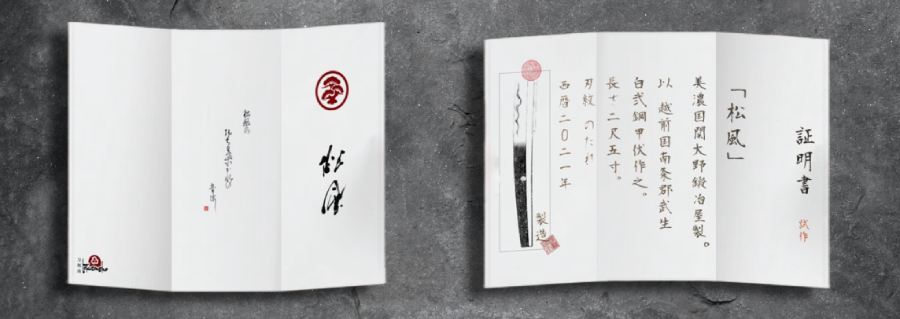
A photo book documentating of the making of your Matsukaze is also part of the package. Each of the artisans documents the progress of making his part of your katana.
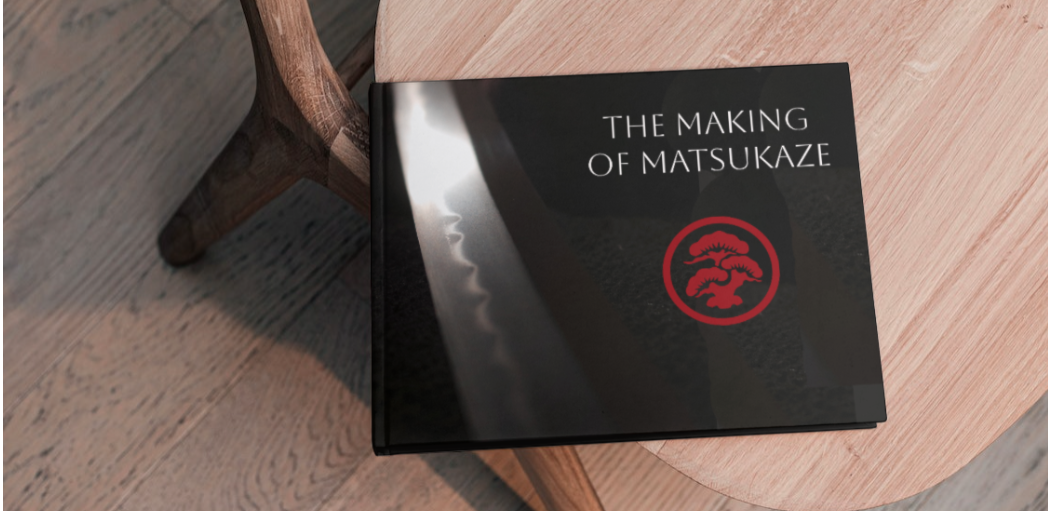
What’s next ?
Once you have submitted your configuration, we will gt back to you within 48 hours . Either with questions or options regarding the choices you have made in the configuration tool or with a quote for your configuration. Once you have checked the quote and signed off on it (we will provide a digital signing process for that) you will enter our payment plan:
1st payment: 10% of the total price is due upon signing of the quote. These 10% remain refundable until we notify that the smith will be starting to forge your blade. Once the blade is forged (you will be receiving photos of the progress of your blade) the 2nd payment of 30% is due. You will pay the final 60% once your Matsukaze Katana is finished and ready to be sent to you. Of course you will receive further photos from the making of your Tosogu, Tsukamaki and final integration along the way.
You will be able to pay via bank transfer, credit card or Klarna. Please understand that we are not offering payments via Paypal.
How long will it take ?
Almost all of us here at Tokensho have been on the “other side” of having a custom Katana made. And we therefore are very much aware of the frustrations that come with overly optimistic (and ever-extending) timelines and non-responsive artisans.
We currently estimate that making your Matsukaze will take 10-12 weeks if it is a baseline sword or not too far from it. Once the configuration has been finally agreed, you will receive a tentative date of delivery and we will keep you posted on the progress all the time.
Ready ?
OK, we are done. All we need you to do now is your confirmation that you are 18 years or older. then you can submit this form. This configuration form is V0.5 and we are not expecting it to be perfect. If you encountered anything that either did not work properly or could be improved, please send me an email here.
Are you 18 years old or older ?
Please check the highlighted fields.
